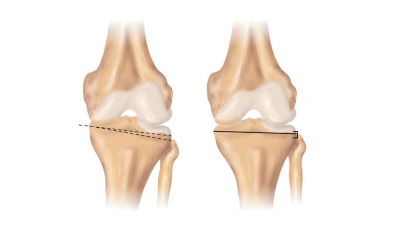An osteotomy is a surgical operation whereby a bone is cut to shorten or lengthen it or to change its alignment. It is sometimes performed to correct a hallux valgus, or to straighten a bone that has healed crookedly following a fracture. It is used to correct axial and torsion deformities and length discrepancies in the lower limbs. Osteotomies are also performed in the upper limbs, pelvis and spine, but much less frequently than in the legs. The operation is done under a general anaesthetic.
Osteotomy is one method to relieve pain of arthritis, especially of the hip and knee. It is being replaced by joint replacement in the older patient. In the hips and knees, this can realign the leg and improve gait and as well as reduce pain. Also, when knee or hip replacement is not a good option due to young age, you may want to consider an osteotomy.
Types of Osteotomy
This procedure can fix problems in many different bones and joints. For instance:
Hip: During surgery, a doctor will reshape your hip socket so it better covers the ball of your hip joint.
Knee: A kneecap that’s not quite straight can be painful, and arthritis can make it worse. During a knee osteotomy, either your tibia (upper shinbone) or femur (lower thighbone) are cut and reshaped. This takes pressure off the damaged side of your knee joint.
Spine: A wedge-shaped piece of bone from a section of your spine can be removed to correct a swayback or reduce a hunchback.
Jaw: The bones in some people’s faces don’t line up with the bite of their teeth. A mandibular (lower jaw) osteotomy moves your lower jaw into a new position.
Big toe: A segment of bone can be removed from your big toe to straighten it and stop it from jamming into your other toes.
Chin: Plastic surgeons use osteotomy to narrow a broad or square chin.
A corrective osteotomy involves dividing a bone (using a saw, drill or chisel) in a controlled manner according to a preoperative plan, and then fixing it in a better position. When an osteotomy is undertaken while the adjacent joints are still healthy, the function of such joints is expected to remain normal for the rest of the patient’s life.
The major risks include the following:
•Blood clot
•Infection
•Nerve palsy.
•Failure to heal.
REFERENCES
http://www.ortopedska-klinika.si/upload/files/Corrective%20osteotomy.pdf
https://healthcare.utah.edu/orthopaedics/specialties/osteotomy.php
https://www.sciencedirect.com/topics/medicine-and-dentistry/osteotomy
https://www.webmd.com/digestive-disorders/probiotics-18/what-are-probiotics?icd=stknt


